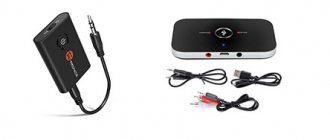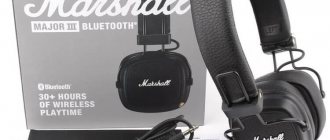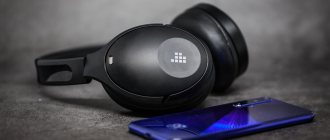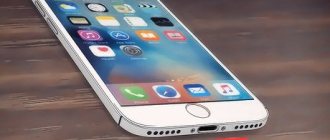Not all Bluetooth headphones are created equal; there are some that will please your ears.
I consider myself an audiophile, which means I have an unhealthy love for headphones. A couple of years ago, I would never have used Bluetooth headphones because of the terrible loss in quality compared to the wired connection option - too significant, in my opinion. Bluetooth headphones will never sound as good as the best wired models, but things have changed so much that I now own several pairs of wireless headphones.
There are two reasons wireless headphones can sound good, and both are important—and without the other, they're pretty much useless. These reasons: built-in DAC with amplifier and audio codec. Major changes in both of these areas have led to improvements.
DAC is hardware
Speakers - even the tiny ones found in headphones - cannot create a sound wave from a digital signal that our ears perceive. And most music is stored digitally, so you need something to convert it to analog. Meet the DAC.
The phone has a DAC and an amplifier, but they do not work with headphones connected via Bluetooth, because the phone transmits information digitally to the headphones - so the headphones themselves also have a DAC and amplifier inside. Any wireless audio device has them: be it headphones, a speaker, or Amazon Echo.
Previously, the cheapest DACs and amplifiers were installed in wireless headphones, and engineers did not take any measures to isolate the circuit from interference from other elements. And this is important because the power circuit, for example, generates audible electrical noise - the same hum that is found in cheap audio devices. Horrible.
Circuit design is very important if high quality audio is the goal. The DAC, having converted the signal from digital to analog, sends it to the amplifier, because the signal itself is not strong enough to move the speaker. Due to the cramped dimensions, there are no complex solutions in the headphones - just a transistor circuit on the board. To avoid distortion and clipping, the amplifier must be designed so that the input signal amplitude matches the output level. And after this, the circuit must be electrically isolated.
It's technically challenging, but all you need to know is that wireless headphone manufacturers have spent a lot of time designing and using high-quality components and clever engineering to make Bluetooth headphones sound good.
Package
The packaging is an example of brevity and simplicity, made in the style of “Apple” devices.
A small box (12cm x 6cm x 3.8cm) made of thick cardboard in an elegant white color. As I have said many times, you are greeted by your clothes. And the impression from the first acquaintance is very positive. The packaging is pleasant to hold in your hands and is not a shame to give as a gift. Box
Codecs are important
Bluetooth profiles and codecs are complicated. Fortunately, the days of headsets that are only suitable for calls are numbered, and manufacturers now include the technology necessary for stereo sound in all models. And although we no longer need to look for headphones that support A2DP and AVRCP profiles (I told you, everything is complicated), for the best sound we will have to choose ears that support HD codecs.
A codec is an encoder and decoder. The technology took the master recording and converted it into a digital format using an encoder, and the hardware inside the wireless headphones distills the digital recording into audio that can be heard using the DAC and amplifier I mentioned earlier. But Bluetooth does not have the widest bandwidth, so the files in the source are compressed even more and are decompressed by the headphones themselves. The software that runs this process is called a codec.
There are four codecs that you should pay attention to when choosing your next headphones - and the source must support them too. These are aptX, aptX LL, aptX HD and LDAC.
aptX is a proprietary audio codec developed in 2010 simply because the standard Bluetooth audio codec was terrible. With aptX, you can transmit CD-quality audio (16 bit/44.1 kHz) via Bluetooth.
aptX LL is a lower latency version of aptX. To achieve a latency of at least 32 ms, it sacrifices a little quality - but the sound does not feel late at all. Useful in games where you have to navigate by sound.
aptX HD is a more modern version of aptX that uses a new, more severe compression algorithm and supports high quality audio transmission (24 bit/48 kHz), which is why the sound is almost as good as in expensive wired headphones. Most people won't notice any further improvement in sound quality, so well-designed headphones with this codec will sound perfect.
LDAC is a codec developed by Sony to transmit “true high-resolution audio” over Bluetooth. But it transmits the signal as 24 bit/96 kHz at 990 kbps. Android has native support for LDAC, but few headphones other than Sony use this codec.
Let's forget about aptX LL, since its main advantage is minus a couple of milliseconds of latency, which is important for games, but does not matter much for listening to music. The remaining three codecs in terms of quality go in this order:
aptX sounds pretty good to most and is significantly better than the standard Bluetooth codec;
aptX HD sounds even better and most won't even notice the difference with the higher quality;
LDAC is capable of transmitting more data per unit of time and therefore is able to work with higher audio quality than other codecs. Lots of phones support it, but to enjoy it you'll have to get headphones from Sony.
For most, any of these three codecs will sound good - even aptX, which has the least sound quality among them. But for the audiophile level you need aptX HD or LDAC. And remember that both the source (phone) and headphones must support the codec. Information about supported codecs is written in the device characteristics.
Technical specification from the store page
— Low power consumption with strong driving power — Clean Line-Out activated at Max Volume — Built-in DSP — Software DSD — External USB DAC Functionality (OSX + PC) — Compatible with various Android devices through OTG — Hi-resolution :24Bit- 96khz 192khz — Headphone output :3.5mm — Impedance :16-100ohm at 1khz loading — Output vrms:1.5Vrms max — THD+N:0.003% ,1khz 0dbfs — SNR:105Db AT 3.3V power supply — Resolution :24bit/192khz sampling — System power current :10mA-70mA max — Power input:1.8V-3.3V+-10% — Output gain level step :3dB/step ;16 steps — Headphone power output :10mW max
What really matters
Good news: Most high-quality wireless headphones (and even some cheap ones!) support aptX, and aptX HD is gaining popularity. It’s the same story with phones: if it’s only a couple of years old, then most likely it has support for aptX and even aptX HD. You can equip yourself with Sony equipment, you just need a phone with Android 8 or later - then both the source and the headphones will have support.
Innovations in DAC and amplifier circuitry have meant that most headphones, by their nature, strive to squeeze the most out of the audio signal they receive. Even a cheap pair of earbuds have built-in DACs with an amplifier that are superior to anything that existed in this market five years ago.
The only thing worth paying attention to is support for the correct codecs on both the phone and headphones - plus you need to find a source with a high-quality audio signal. And then, most likely, you will enjoy the sound!
Original: Bluetooth headphones can sound worse than wired ones, but they don't have to
Equipment
The equipment is quite rich.
The box contains the device itself, a warranty card and three cables: USB-microUSB, Apple Lightning-microUSB for Apple devices, microUSB-microUSB Android USB OTG for Android devices. The quality of the cables is very good. Equipment
Let's sum it up
Many buyers mistakenly believe that the more expensive the phone, the better the sound.
In practice, the differences between flagships and devices in the mid-price segment may be insignificant or absent altogether. No, this does not mean that the new smartphone will disappoint with its sound, but it will clearly not impress demanding buyers. The best choice is devices with a DAC, allowing you to get real audio pleasure. However, you need to understand that they are rarely produced today, which is why you will have to sacrifice some capabilities. Therefore, it is better for the average user without special requests to choose a good flagship or sub-flagship.
conclusions
Overall, COZOY Astrapi is a very interesting device and made a good impression.
It cannot be called ideal; there are some nuances when working with a PC, but it works flawlessly with mobile devices, for which it is mainly intended. My vision for using COZOY Astrapi is this: listening to music while walking, on public transport, on a long road, when you don’t want to carry and charge an additional device, but want to have the highest quality sound. Far from home, with a laptop, when there is no way to carry additional equipment with you, and the sound quality of the integrated audio card is not satisfactory. There is a separate issue of price. $129 is certainly not a small amount. But you need to take into account that similar devices from other manufacturers are more expensive. COZOY definitely wins on price. Also on the side of COZOY Astrapi is its miniature size, light weight and high-quality sound.
My other audio reviews
— Review of Knowledge Zenith HDS2 headphones. Inspired by Yamaha - Review of dual-driver headphones KZ ZS1 - Honest review of hybrid headphones XIAOMI QTER01JY HYBRID - Without fanaticism and idolatry - Macaw RT-10 - Headphones with powerful bass and beautiful vocals - In-ear headphones from Venture Electronics - VE MONK. Monk in red “pants” - Review of the portable headphone amplifier XDUOO XQ-10 - Review of in-ear headphones Knowledge Zenith ED9 (KZ ED9) - On-ear clip-on headphones YUIN G1A - Hisoundaudio POPULAR-1 - A gift horse with strange teeth... - HiFiMan HM-603 Slim 4GB — Musical “building block” — Review of TTPOD T2E hybrid headphones — Bass Enhanced! — Review of COZOY Astrapi — USB DAC and amplifier for devices running Android, IOS and PC — Gift HiFi headphones PENON IEM — Cheaper for nothing — Review of hybrid headphones FIDUE A73 — Divide and conquer! — AuGlamour AG-R1 “Glamourous” headphones with wonderful sound — Dynamic headphones with two drivers VJJB V1 — Ceramic DIY IE800 headphones from Tennmak Technology — XDUOO X2 portable player with HIFI sound
The product was provided for writing a review by the store. The review was published in accordance with clause 18 of the Site Rules.
Appearance
Cozoy Astrapi looks stylish and expensive.
The designers did a great job. Design, workmanship and materials are at a very high level. The device itself is silver in color with a textured surface, made of aluminum alloy. The end caps are apparently made of plastic, painted to look like metal. Cozoy has no controls or indicators. There are small indentations on the sides. On the front side there is a corporate logo. On the reverse side there is a clip for fixation. The clip is made entirely of metal and has a fairly tight movement. On the right side there is a microUSB connector for connecting to a device, on the left there is a 3.5 mm connector for connecting headphones. Cozoy is very small and light. Weighs only 8 grams. Dimensions: 52mm x 16mm x 6mm. Appearance
With USB Flash











